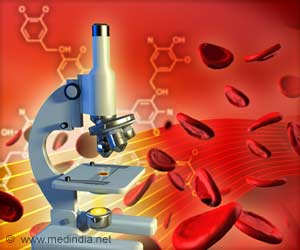A natural compound from a deep-sea sponge with anti cancer properties, belonging to the family Neopeltidea has been found by Karl Scheidt, a Northwestern chemist.
Northwestern University chemist Karl Scheidt has successfully synthesized a natural molecule known as neopeltolide, having cancer-fighting properties, that was isolated from a deep-sea sponge belonging to the family Neopeltidae.
Scheidt assistant professor of chemistry in the Weinberg College of Arts and Sciences at Northwestern, and his team were inspired by the 2007 discovery by marine chemist Amy Wright of a new natural compound derived from an uncommon deep-sea sponge found to be very effective at inhibiting cancer cell growth.//The team of researchers successfully built the molecular structure of this compound but on comparing the spectra, or unique molecular fingerprints, of their structure and that of the natural compound, they discovered that the two structures were different.
This led the Northwestern team to discover the real structure of neopeltolide. And this finding would further allow the researchers to learn how the new compound works, leading to more-effective anti-cancer drugs.
“The reported biological activity of this new natural compound was fantastic -- two to three orders of magnitude more potent for some cancer cells than Taxol, a common chemotherapy drug. Synthetic chemists are inspired by such structures. Because of the potential benefits to human health, these are the compounds you want to go after,” said Scheidt.
Marine sponges do not have claws, teeth or quills, for their protection against predators; instead they have developed chemical protection as their defense mechanism. The sponge and/or bacteria hosted by them produce poisonous compounds to fight enemies. This mechanism makes these sponges a source of many natural products with cell-killing abilities.
After discovering the difference in the structure of their first built molecule and the natural compound, the researchers concluded that the structure given by Amy Wright was reported incorrectly. And thus they decided to determine the right structure.
Advertisements
In order to construct the compound, the researchers used an efficient, convergent synthesis, just like a car is put together by assembling the major parts, like the engine, built separately and then put together in the final piece.
Advertisements
He added: “Nature is the biggest pharmacy around. Sixty to seventy percent of pharmaceuticals are inspired by natural products. We learn from nature, but we want to improve on nature, too.”
Neopeltolide stops cell division in an unusual place, and this activity is different from that of other commonly known and utilized chemotherapies.
“We know there is something different going on with this new molecule, and we want to start figuring out if this behavior is the beginning of a new way to treat cancer,” said Scheidt.
This discovery is reported in a paper published in the recent issue of the Journal of the American Chemical Society
Source-ANI
SPH /GA










